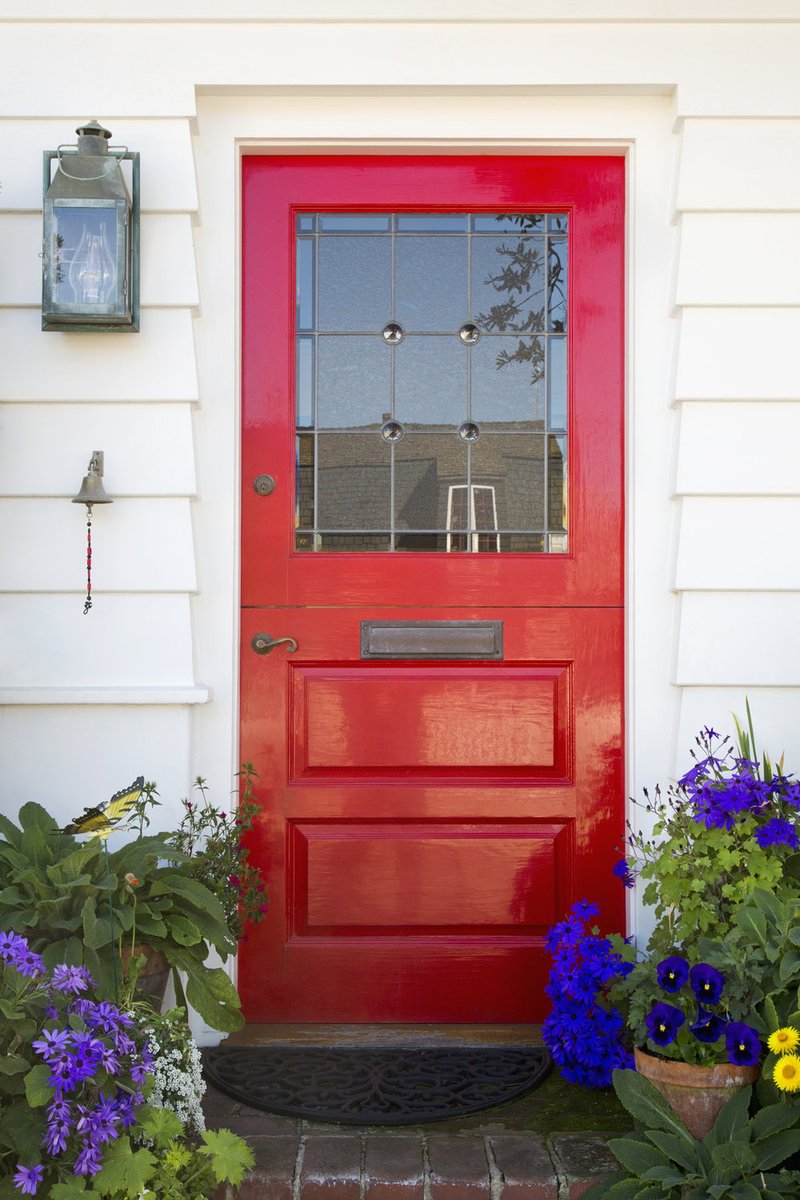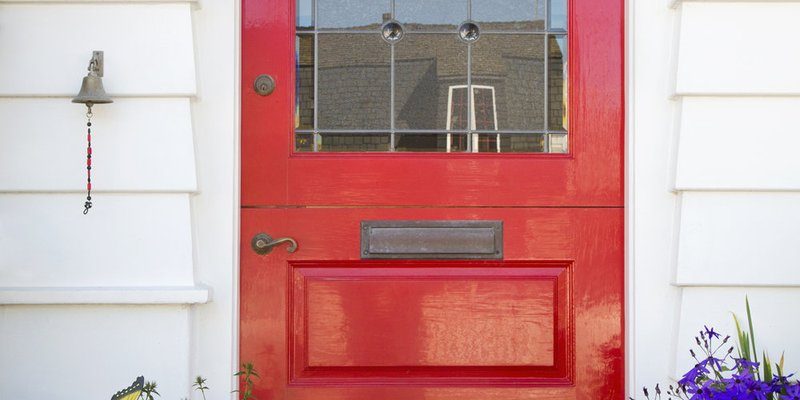
Honestly, it’s easy to overlook. Maybe it seems harmless, like a loose shoelace or a trickle from the garden hose. But a gap that lets in light can also let in drafts, bugs, and even water—and it can slowly eat away at your comfort (and your energy bill). Whether your home came with a Masonite fiberglass door, a steel entry door, or a sturdy wood model, light showing around the top corner almost always means there’s a gap that needs your attention.
Let’s break down what causes this common issue, why it matters, and—most important—how to fix it for good.
What Causes Light Around the Top Corner of an Exterior Door?
You might be wondering, “Why would a brand-new door, or even an older one, suddenly develop a gap where there wasn’t one before?” Here’s the thing: exterior doors aren’t immune to wear and tear. Weather, shifting frames, and even how often you use the door can all play a part.
The most common culprits are:
- Worn or compressed weatherstripping: That soft seal around your door’s edge is supposed to block out air and light, but it gets flattened over time.
- Loose hinges or sagging door: When a door hangs down even just a fraction of an inch, the top corner can pull away from the frame.
- An out-of-square or warped door frame: Moisture, settling foundations, or simple age can cause the wooden frame to twist just enough to break the tight seal.
- Poor installation: Sometimes, if a door wasn’t installed squarely or the wrong hardware was used, you’ll notice gaps right from the start.
Think of your door as a puzzle piece that has to fit perfectly in its slot. Even a small mismatch can show up as light where it shouldn’t be.
Why Small Gaps in Exterior Doors Matter
It’s tempting to shrug off a slim band of light. But let me explain why you shouldn’t. Gaps in exterior doors go way beyond looks—they’re like leaving your window cracked open, even when it’s storming outside.
First, there’s energy efficiency. That crack is a straight shot for warm or cool air to leak out, which means your heating or AC has to work overtime. Over weeks and months, that little gap can add up on your energy bill.
Then there’s the creature invasion. Flies, ants, and even rodents see a gap as a welcome mat. And if water gets in during a rainstorm, you could end up with warped wood or mold.
A “tiny” gap can cost you real money, create comfort issues, and even weaken your door’s security over time.
Finally, there’s security. Sure, the gap itself doesn’t mean someone could break in—but it does mean the seal isn’t tight, which can make the door easier to force or pry open with the right tools. No one wants that risk.
How to Diagnose the Source of the Gap
Before you can fix the problem, you need to figure out where it’s coming from. Start with a few simple checks—no fancy tools required.
- Check the weatherstripping: Look and feel along the top edge and corners of the door. If the material is flat, torn, or missing, it can’t do its job.
- Inspect the hinges: While the door is open, wiggle it gently. If it feels loose or droops, the hinges might be worn out or need tightening.
- Shine a flashlight from inside while it’s dark outside (or vice versa). If you see light spilling out beyond just the corner, you might have more widespread alignment or sealing issues.
Try closing the door and latching it fully. If you see the gap widen or narrow as you push or pull, that’s a sign your door isn’t sitting squarely in the frame or the latch isn’t pulling it tight enough.
Sometimes, especially with older homes or heavy use, the whole door frame relaxes out of shape over time. That’s where professionals might come in, but there’s plenty you can do before making that call.
Common Fixes for Light Showing Around Exterior Door Corners
Let’s run through the classic fixes for this type of issue, starting with the quickest to try at home.
- Replace or adjust the weatherstripping. Most big-box stores sell replacement foam or rubber strips that you can cut to fit. The trick is to make sure it’s thick enough to press against the door when closed, but not so thick it keeps the door from latching.
- Tighten or shim the hinges. Sometimes, just a screwdriver and a couple of turns can pull the door back where it belongs. If the screws are stripped, try longer screws or small wooden shims.
- Adjust the strike plate. The metal plate the door latch clicks into might be out of alignment. Loosen it, move it slightly, and retighten so the door sits snugly.
- Add a door sweep or corner seal. For small gaps at the top corner, a specially shaped adhesive seal (sometimes called a corner pad) can close off the light without major repairs.
Honestly, you’ll feel like a champion if you fix it in under an hour. But if you’re dealing with an out-of-square frame or visible warping, it might be time to call a pro.
When to Call a Pro for Door Repair or Replacement
There’s no shame in calling for backup. If you’ve tried all the DIY steps—swapped the weatherstripping, adjusted the hinges, fiddled with the strike plate—but that stubborn bit of light is still there, you might have a deeper problem.
If your door is swelling, twisted, or dragging on the frame, it could need planing or professional realignment. Sometimes, the frame itself is warped, especially if your home’s foundation has settled or there’s been water damage. In these cases, repairs can get technical pretty quickly.
Another sign it’s time for a pro? If you see other issues, like soft wood, visible mold, or the door refuses to close properly even after adjustments. The cost of calling a handy-person or door specialist is a lot less than living with poor insulation, water leaks, or a security risk.
Remember: an exterior door isn’t just about curb appeal—it stands between you and the outdoors. It’s worth getting it right.
Comparing Quick Fixes vs. Full Door Replacement
You might be on the fence: is it worth patching up your door one more time, or is it time to replace it altogether? Here’s a quick look at the trade-offs:
| Quick Fixes | Full Replacement |
|
|
If your door is generally solid and the light issue is new, start with the small stuff. But if the problem keeps coming back, or the door just won’t seal, replacement might be the smarter long-term move.
Preventing Future Gaps and Keeping Your Door Sealed
Once you’ve fixed the issue, it’s worth learning how to keep it from coming back. A little bit of attention every so often can save you the hassle next year.
- Check your weatherstripping every fall and spring for wear or gaps. Replace as needed—it’s cheap insurance.
- Tighten hinge and latch screws every few months, especially after big temperature swings.
- Inspect the door and frame during rainy weather for any leaks or signs of moisture creep.
- For wooden doors, a fresh coat of paint or finish every couple of years helps prevent swelling and warping.
If your home is older or you live somewhere with wild temperature changes, make it part of your seasonal checklist. You’ll thank yourself later.
Final Thoughts: Don’t Ignore that Sliver of Light
A little daylight around your exterior door’s top corner can seem harmless at first, but it’s your home’s way of asking for a bit of attention. Whether you’ve got a classic wood entry door, a modern steel model, or even a Masonite fiberglass door, preventing and fixing gaps is all about small, regular care. Most people can handle the common fixes with a few tools, and if not, pros are out there to help.
Bottom line: keeping your front door sealed tight isn’t just about blocking light—it’s about comfort, efficiency, security, and peace of mind. If you notice light showing around your exterior door, don’t ignore it. With a little effort, you can turn that pesky gap into just another homeowner story—and keep your house cozy in every season.
